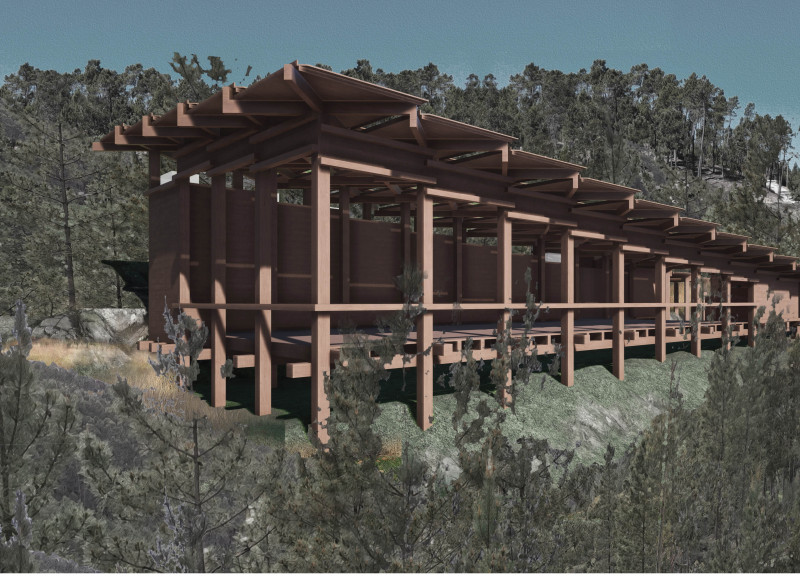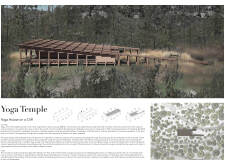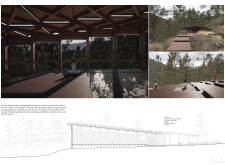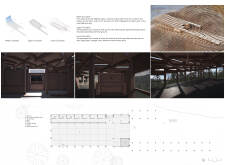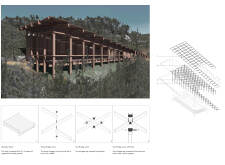5 key facts about this project
The Yoga Temple in Vale de Moses is designed as a space for practicing yoga, surrounded by natural beauty. Located among dense woods, the structure serves as a retreat for those looking to deepen their connection to nature while engaging in their practice. The design takes inspiration from the ancient roots of yoga, which emphasizes harmony between humans and their environment. By merging architecture with the landscape, the building creates a calming atmosphere that invites reflection and mindfulness.
Design Concept
The design emphasizes the relationship between the built environment and nature. Elevated above the forest floor, the structure allows users to experience views of the surrounding landscape from different perspectives. This elevation also fosters a sense of separation from the ground, promoting a focused and introspective space for yoga practice. The building is arranged into two distinct areas: an upper level that is open and airy, and a lower level that is more enclosed and tranquil.
Materiality and Sustainability
Antiseptic wood is the main material used in the construction of the Yoga Temple. This choice promotes a healthy indoor environment while maintaining a natural look that complements the scenery. The roof is designed with replaceable wooden panels that collect rainwater, which helps reduce environmental impact. Such eco-friendly features ensure the building operates sustainably, aligning with the principles of yoga that emphasize care for the environment and personal well-being.
User Experience and Flow
Thoughtful planning has created circulation paths that connect indoor and outdoor areas throughout the building. This design encourages movement among users, allowing them to flow easily from yoga practice to outdoor contemplation. The upper level is tailored for more experienced practitioners, offering expansive views that enhance their experience. The lower level caters to beginners, providing a quiet space with a tea area that encourages relaxation and reflection after practice.
Functional Spaces
Functional areas within the Yoga Temple are designed to support various aspects of yoga practice. The upper area serves as a venue for advanced sessions, emphasizing connection with the surrounding landscape. The lower level is equipped with a tea area and semi-indoor spaces that create a calming environment for novice practitioners. These carefully designed spaces cater to the diverse needs of users while honoring the historical and spiritual roots of yoga.
The design details, particularly the roof, invite users to walk upon it, reinforcing the connection between the built environment and nature. It offers not only a practical function but also a way for practitioners to engage physically with their surroundings while deepening their yoga practice.


